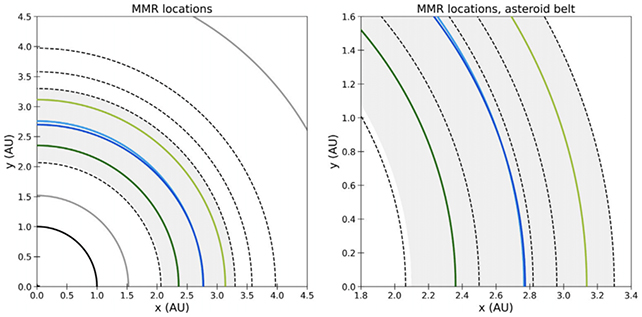Our solar system is a carefully balanced celestial dance held together by a near-perfect balance of gravity and inertia.
What this cosmic waltz would look like with a “super-Earth” instead of the asteroid belt between Mars and Jupiter is a question posed by planetary scientists Emily Simpson and Howard Chen of the Florida Institute of Technology (FIT).
The researchers were inspired by a puzzling fact: many solar systems like ours are expected to have super-Earth planets relatively close to their sun, so it’s quite strange that ours doesn’t.
“What if the asteroid belt, instead of forming the ring of smaller asteroids that it is today, what if it had instead formed a planet between Mars and Jupiter?” says Simpson.
“How would that affect the inner planets, like Venus, Earth and Mars, specifically?”

Simpson and Chen ran mathematical models to look at how different sized Earth-like worlds would have affected the rest of our solar system. The planet sizes tested were 1 percent of Earth’s mass, exactly Earth’s mass, twice Earth’s mass, five times Earth’s mass, and ten times Earth’s mass.
Each simulation was run for a few million years, with the effect on the orbit and tilt of other planets measured.
These are important factors for habitability on a planet: the orbit affects the length of the seasons, while the tilt affects how extreme those seasons are. The knock-on changes of a super-Earth—dubbed by the researchers—were intriguing.
“If it’s one or two Earth masses, which is still a pretty big planet, our inner solar system would still remain quite nice,” says Simpson.
“We may experience slightly hotter summers or colder winters because there is a swing in slant, but we can still live our lives.”
However, the larger super-earths shifted the positions of the other planets significantly. An additional planet 10 times Earth’s mass could have pushed our own planet out of the habitable zone and closer to Venus, while also impacting its tilt, causing dangerous extremes between seasons.
Of course, modeling the fate of multiple worlds is quite challenging, with any slight variation creating all sorts of consequences – like the rise and fall of Earth’s ice sheets, for example – but these simulations could be immensely useful in the future in spotting exoplanet Systems with the right balance for habitable zones.
“If we discover a solar system-like system, but with a slightly different history—where instead of the natural belt there is a planet—could the inner regions of that planetary system still be hospitable?” says Simpson.
“The answer is that it depends on how big the planet is. If it’s too massive, that would probably spell doom for the planets in its orbit.”
The research was published in Icarus.


